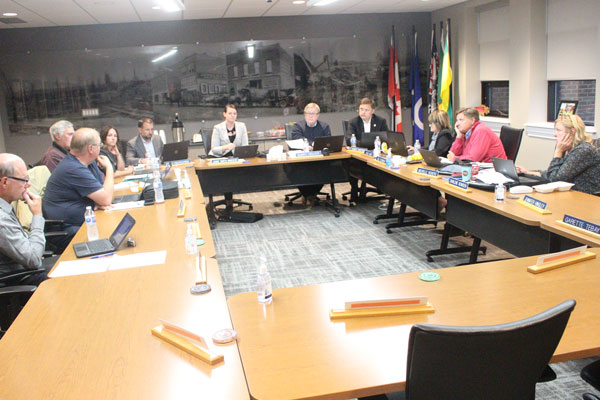
At the Saskatchewan Rivers School Division regular board meeting on Monday, Oct. 3 a delegation from Wildrose Public School shared their school improvement plan as part of the accountability report on Learning Improvement Plans presented by Superintendent Jennifer Hingely.
Director of education Robert Bratvold explained that each school has a Learning Improvement Plan (LIP) and the division made some adjustments over the last year,
“We have evolved what those plans look like to make them a little more specific around strategies and actions,” Bratvold said.
Bratvold explained that the LIP is important because it makes sure that work is focused on goals that are important and aligned with the provincial plan and division’s strategic plan.
Professional learning targets in the division for 2022-2023 include items such as teachers supporting student fluency in reading by using quality decodable books and enhance their phonics instruction.
Bratvold said decodable books and text passages are an important part of a structured literacy approach to reading instruction because they contain words made of letter-sounds, and spelling and morphological patterns that a student has been explicitly taught.
“That alignment is usually clear, but it takes work to bring that alignment out into actions at the school level and that’s where that learning plan comes into play,” he explained.
Bratvold said they use data to figure out best practices, best strategies, and what is most important for support students. They then look at how to accomplish those goals.
Before the formal presentation by Wildrose, Hingley walked the board through the report in a closed session.
Former Principal Jennifer Ferguson, Inclusive Learning/Dreamcatcher Coach Leanne Gunderson and current Principal Carrie Grant-Walker walked the Board through the changes and improvements made to help better meet the needs of their students in literacy.
“It was fantastic to have Jenn and Leanne as the team last year and have Carrie Grant Walker as the new principal up there steering the ship and building on the success they have had,” Bratvold said.
Bratvold explained that the LIP is an interim document that evolves over time, but the goal of helping School Community Councils identify important areas that need attention remains unchanged.
“They are most useful as that planning document for the people who are leading and doing the work in schools and classrooms,” he said. “That’s the essence of it, (identifying) what’s the most important goals that our students need to achieve, what are the best strategies we can do to help them achieve those goals and who and what and when and how are we going to do those?”
The delegation highlighted their involvement in the Saskatchewan Rivers Leadership Learning Communities led by Hingley and her team as their springboard for the shifts in thinking.
The first part involves identifying areas in specific schools that need improvement. The second involves helping teachers focus their efforts in those areas, be it math, reading, or writing.
“Teachers can take that into the classroom and align their practices with those things that have high effect sizes and are most likely to be successful for students,” Bratvold explained.
In a release, the division said that having Ferguson available to speak to the work done last year, and Grant-Walker present to tie in this year’s vision, helped ensure consistency across all Sask. Rivers schools.
One interesting aspect that they have been working on over the last few years is putting teachers in other classrooms. It can sometimes be in the same school or between schools. The goal is to help teachers see other operations and strategies.
“We have coach cruising where we have, you might have a principal go and visit another principal for half a day and just be able to get into the world and see how they manage and set goals and lead instruction and different things,” Bratvold said.
Another example Bratvold gave was having a Grade 4 teacher from one school going to another school to see how they operate and give a different perspective.
“(There is) lots of good growth both for the teacher that is visiting and seeing some new things and also the teacher that is hosting because they can articulate the sorts of things that they do and why they do them. That helps to strengthen their practices so it’s a win all around,” he said.

